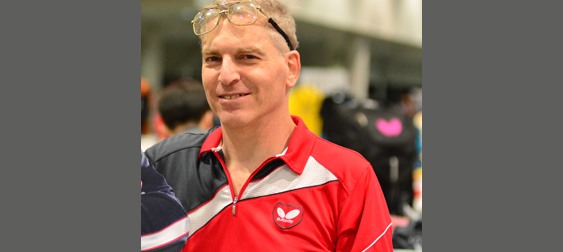Coaching Tips of the Week: Increase Forearm Snap to Increase Smashing Speed - 3 minutes read

(By Larry Hodges)
Many players have difficulty generating great speed on their smashes. Against lobbers and fishers, they often have to smash over and over and still they can’t win the point. Often the problem is lack of forearm snap. To generate great force on the smash, your body has to work together – the legs, hips, waist, shoulders, and forearm, with a weight transfer from your back foot to your front foot. They should work in that order, in smooth progression, at about 70-80% power. (If you use more than that, it becomes a spastic motion, and you not only lose control, you lose power as you are not using all of your muscles properly.) However, it is the forearm snap at the very end that really gives the ball great speed – and is the part that is most often lacking in a weak smash.
One way of helping generate forearm snap and the proper timing is to imagine your legs, hips, waist, and shoulders as being used not to increase smashing speed, but to get the forearm going. Then really snap the forearm just before contact. You should sink the ball through your sponge and into the wood. Except against a very high ball (where you can hit the ball straight on), you should still smash with some topspin, so contact is a slightly upward stroke, even against topspin – contact is sort of like an upward slapping motion. Your smashes should all sound about the same, with a loud crack as the ball sinks into the wood. If the sound varies, then you are contacting the ball differently, which leads to inconsistency. (Some players “smash” with a looping stroke, and for that, it’s more of a looping contact with extra topspin, and so less of a crack sound at contact.)
To develop the forearm snap for smashing, get a bunch of balls and go to the side of the table, near the net. Bounce the ball on the table somewhat high, and smash, using lots of forearm snap. Make sure to keep the elbow down. As you get better, move farther from the net and perhaps bounce the ball lower. (However, against lower balls it’s usually better to loop, using the extra topspin to pull the ball down.) If you are doing this correctly, you can smash at full speed and carry on a conversation without missing a syllable.
Stay “In The Loop” with Butterfly professional table tennis equipment, table tennis news, table tennis technology, tournament results, and We Are Butterfly players, coaches, clubs and more.
Share the post "Coaching Tips of the Week: Increase Forearm Snap to Increase Smashing Speed"
Source: Butterfly Online | Butterfly Table Tennis